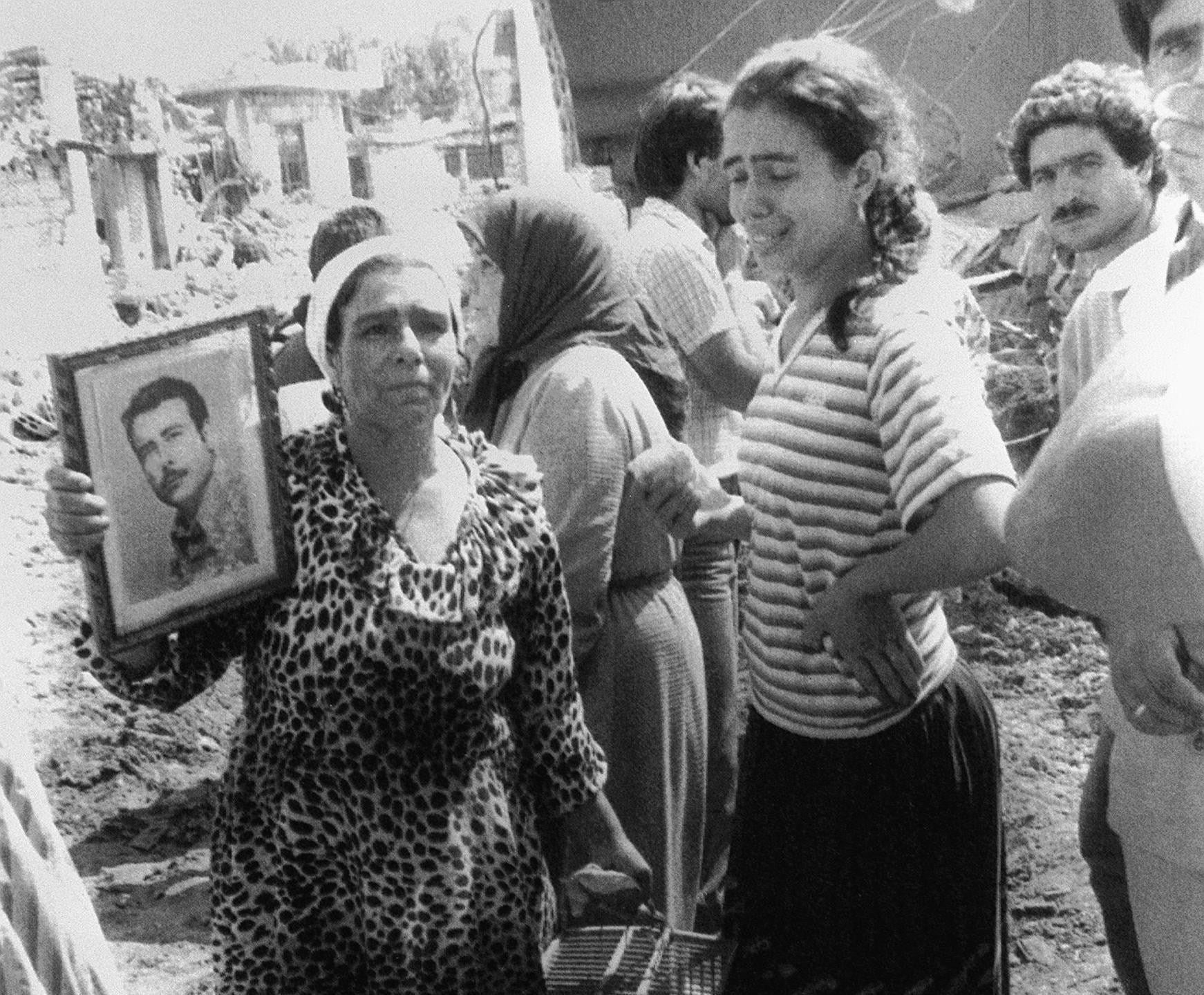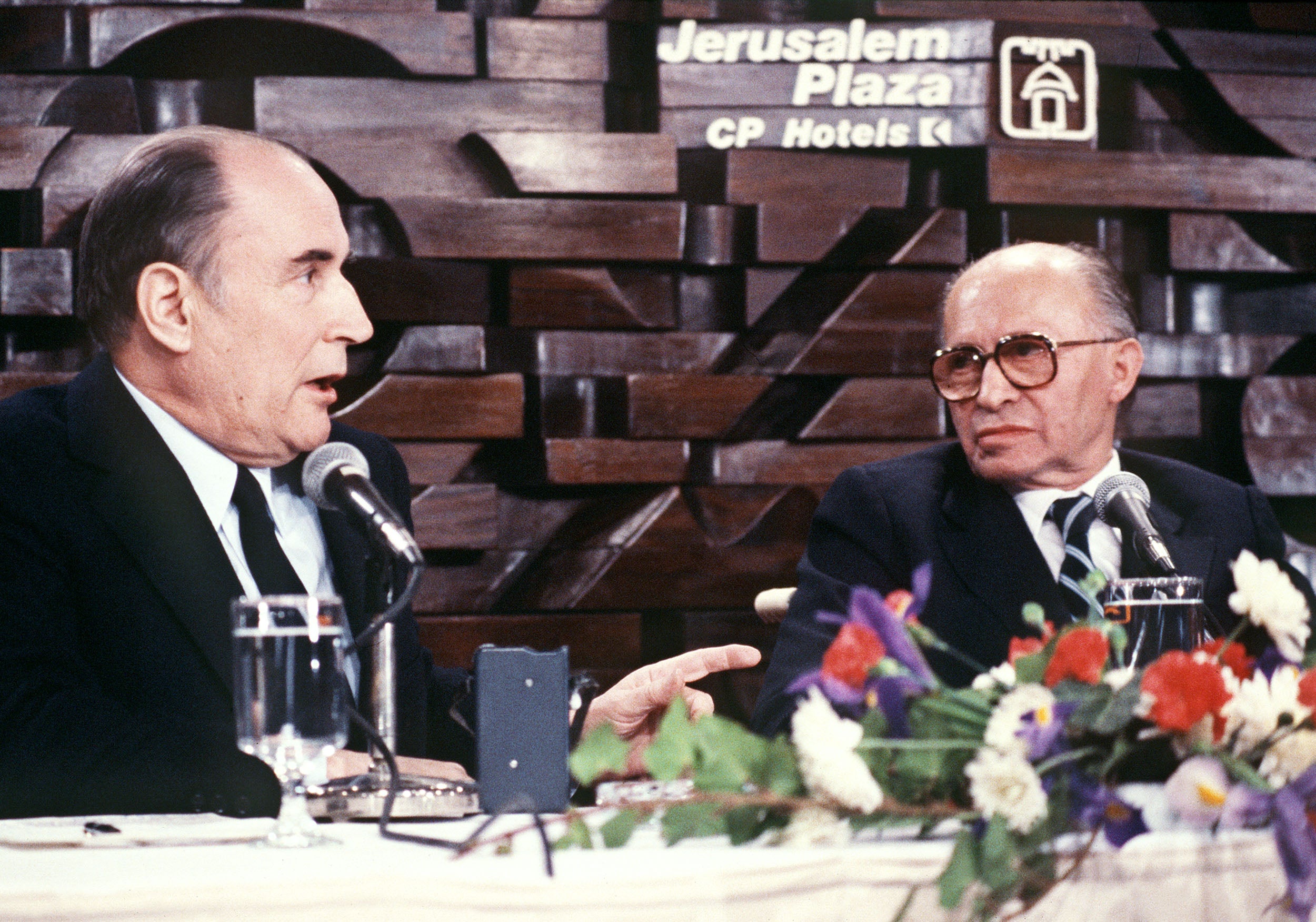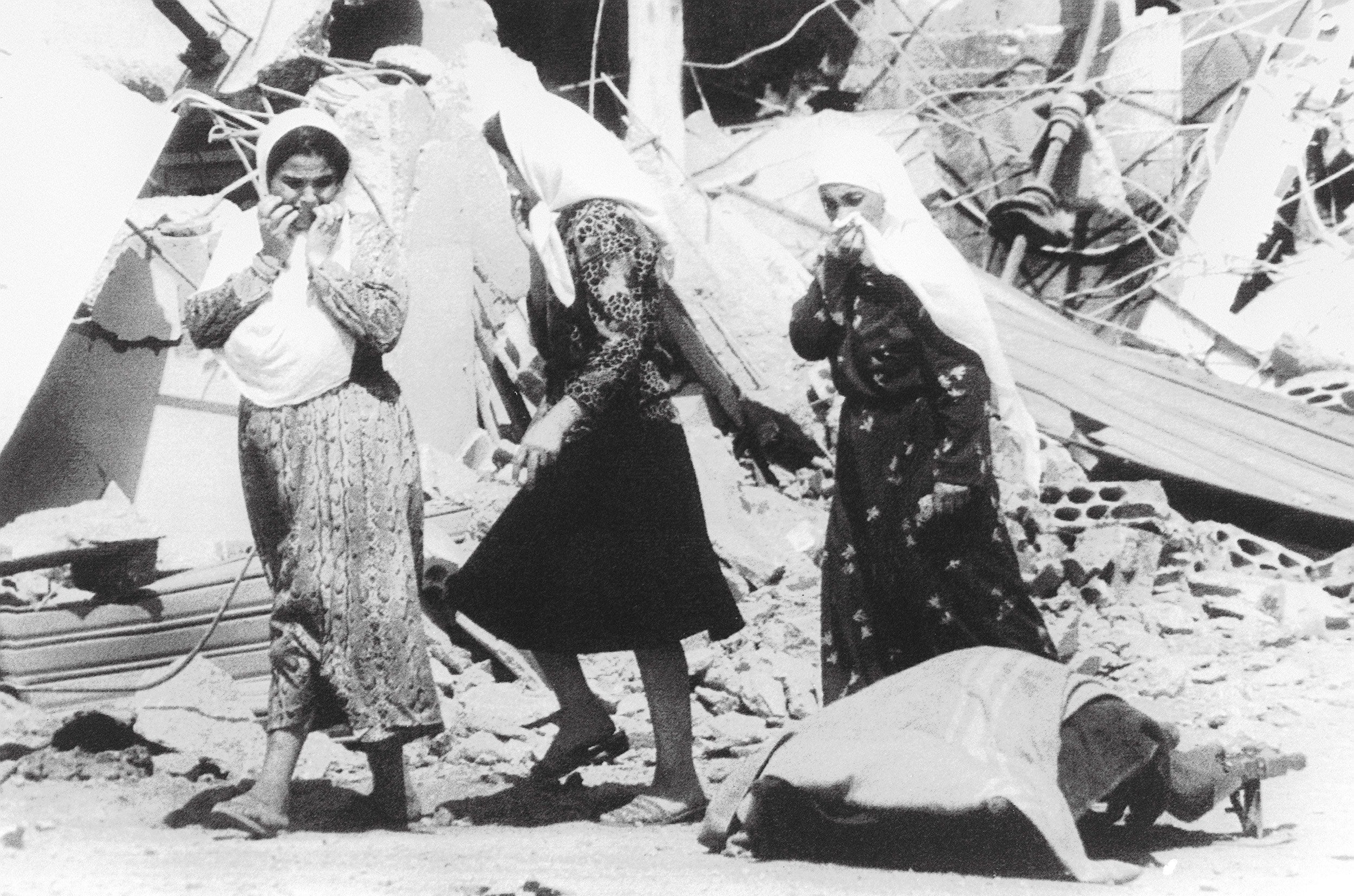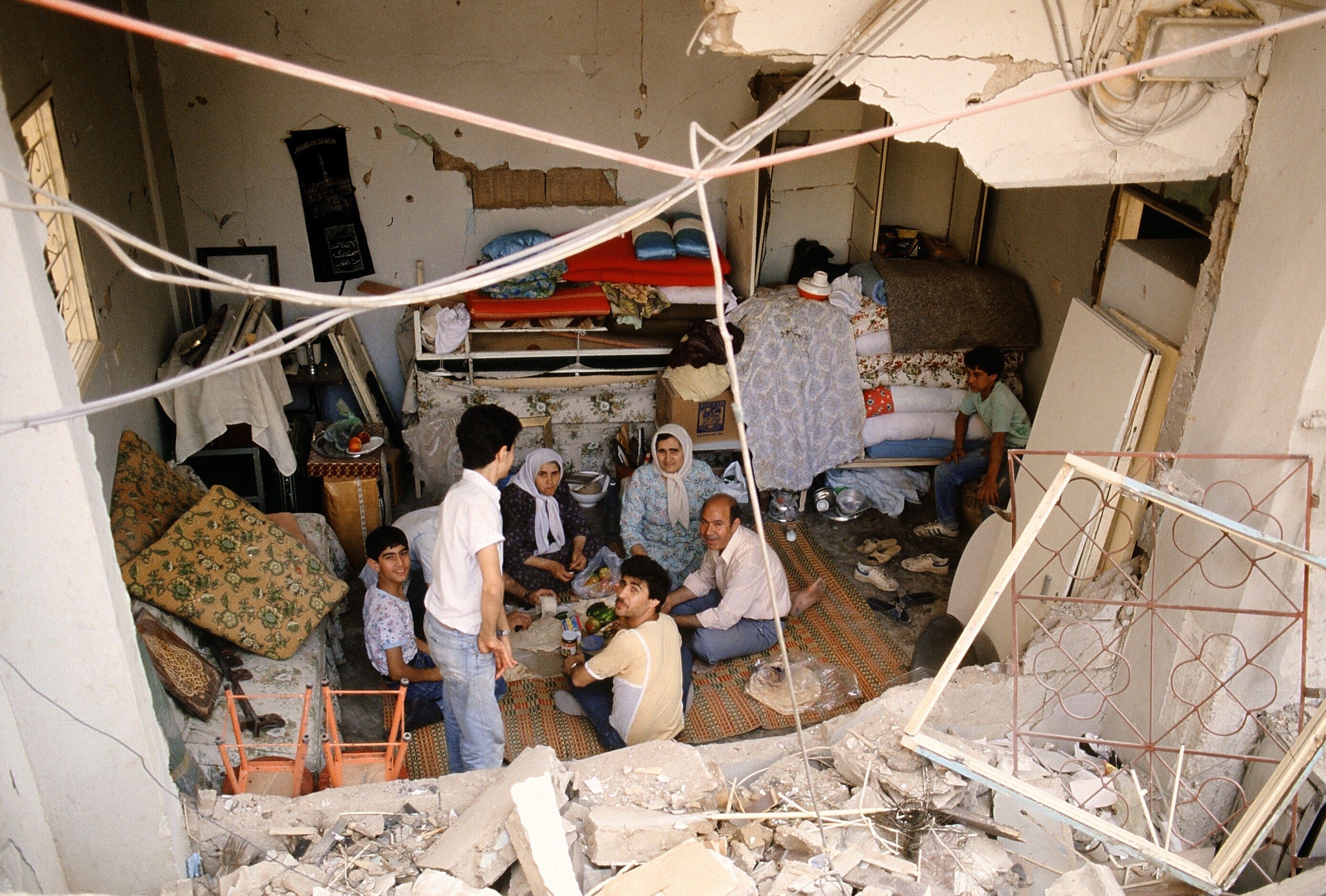Victims the world has forgotten: On the site of the 1982 massacres in Beirut
September 2000: Robert Fisk revisits Sabra and Chatila, where survivors recount the atrocity


They are bulldozing the garbage from the small plot of land behind the plane trees of Sabra and Chatila. Cheap concrete blocks are being laid to form a makeshift dais for speakers. A black flag has been draped by the wall to remind the Palestinians – as if they could forget – that here lies the mass grave of hundreds of their relatives. Up to 400 corpses lie beneath the soft red earth. Up to 2,000 died. But only now, 18 years after the majzara, the massacre, has the atrocity been commemorated.
Of course, if it had happened in a land to the south of here – a land called Israel, which the Palestinians of Sabra and Chatila still call Palestine – the world’s press would gather each year at this time to honour the dead. Mercifully, Israel has never suffered such a slaughter. But if it had, the American president would surely make an annual pilgrimage to the site. Certainly, every US presidential hopeful would turn up. Relatives of the dead would be treated with reverence and generosity.
The mass grave of Sabra and Chatila, however, contains only Palestinians. Until last week it served as both football ground for Shia Muslim youths and a garbage tip. Probably, in a few days’ time, it will become a rubbish dump again. And the survivors of this most awful of weekends fester on in their hot concrete huts, unvisited by journalists or statesmen. Whenever I write about the massacre at this time, I always say that The Independent will be the only British newspaper to remember the anniversary. Sadly, so far, I have been right. A people without a country are a people without honour.
The facts of what happened between 16 and 18 September 1982 are not in doubt – save for the guilty and the insane. On 16 September, the Israeli army surrounded the adjoining Palestinian refugee camps of Sabra and Chatila and sent their Lebanese Christian Phalangist militia allies into them to hunt for “terrorists”. There were none. Just civilians, whom the Phalangists murdered and raped in homes and backyards and streets, slaughtering up to 2,000 civilians, in some cases watched by Israelis from rooftops. Only on the 18th did Israel order its allies out of the camp. When I entered Sabra and Chatila early on the 18th – before the murderers had left – it was already a charnel house.

The Lebanese president-elect, Bashir Gemayel, had just been murdered. The Phalangists were in vengeful mood. Yet Menachem Begin, then Israel’s prime minister, was to claim he never imagined there would be a bloodbath. The Israeli Kahan commission report – which bleakly confirmed that Israeli troops saw the massacre taking place and did nothing – condemned Ariel Sharon, then defence minister, for indirect responsibility. Mr Sharon is now leader of the right-wing opposition Likud party. He could yet become prime minister of Israel.
So this little patch of rotten earth, these few square miles of fetid huts and lanes, should attract at least a little attention at this time of year. The survivors are still here, many of them, still mourning their dead, still sweltering in their bullet-holed concrete slums. Mahmoud Ayoub is 73 now but remembers the day of the massacre as if it happened only a few hours ago.
“We knew the Israelis were circling the camp and I saw several men in Phalangist uniform wearing masks. Neighbours told me they were killing, but I didn’t believe it because I heard no shooting. Then they said that the Phalangists were using knives and I believed them. My son Sobhi and I collected all the extended members of our family we could find – 65 in all – and we led them to the far side of the camp from their homes at night. We saved them all.”
Sobhi’s photograph looks down at us from the wall, 32 at the time, a plump-faced man with thick black hair. “He survived the massacre only to be shot three years later in the camps war,” Mr Ayoub says. “It was in the fighting between Palestinians and the Amal movement. Sobhi was a fighter; he was hit by pieces of a shell and died of wounds. We couldn’t bury him in the cemetery so we put his body in the basement graveyard down the road.”
The subterranean cemetery is still there, a gruesome, dark place of faded pictures of “martyrs”, and cement grave markers, stinking of sewage.

Mr Ayoub married twice but his second wife, Hayat – 60 now, but only 42 at the time – lost at least 10 of her family in 1982. “My nephew, Mustapha Habrat, was hiding with the women and children in one of the air-raid bunkers we had built here,” she says. “The Phalangists came and took all the men out to execute them. Before he was taken away, Mustapha took off his ring and gave it to his wife, Amal, saying, ‘You will be able to sell this and get money for you and the children for a couple of days.’ Then he was taken away and they shot all the men. But Mustapha, though he was hit many times, lay covered in blood and pretended to be dead.”
The story – like all the stories in Sabra and Chatila – gets worse. “While he lay there, gypsies came to loot the bodies, to take the rings and the watches from the dead. When they tried to rob Mustapha, they found he was alive and managed to get him to the hospital.” Saved by those who would pillage his dead body, Mustapha searched in vain for his wife and three children. They had disappeared, were never seen again. Like many of the dead of Sabra and Chatila, they may lie under the golf course near Beirut airport, a mass grave that has never been – and never will be – opened.
The Ayoub family came from the Palestinian village of Majdeqrun in Galilee. As one of the Arab fighters, Mr Ayoub was among the last to leave for exile in Lebanon in 1948. Some of his family stayed behind and are now Israeli Arabs; and old Mahmoud Ayoub was allowed by the Israelis to visit them in 1989. “I found our old home and wept,” he said. “I went into the house – the Israelis had rented it to an Arab woman from another village – and I walked through my family’s olive groves. I even went to Jerusalem and prayed at al-Aqsa. But I knew all the time that, in a month, I would have to leave.”

Mrs Ayoub remains locked on to the moment of the massacre. “I was one of the first to come back and I found the streets heaped with bodies. I took pills to steady my nerves and went into each house. In some, the women were lying dead with their legs far apart. There was much rape. The men were lying on the floor in their blood. It was very hot. The bodies were rotting.”
I don’t tell Hayat Ayoub that I saw all this myself, the dead and the mutilated and the raped. They had even shot the horses in the camp.
And the lesson of all this? Mahmoud Ayoub does not believe there will ever be an independent sovereign state of Palestine. He doesn’t trust Yasser Arafat and he doesn’t believe he will ever return to live in his home. He blames the Americans and the Europeans and he is angered at the number of countries who refuse Palestinians the right to visit Europe.
“The Palestinians are like germs,” he says. “No one wants us – because we don’t have a country.”




Join our commenting forum
Join thought-provoking conversations, follow other Independent readers and see their replies
Comments